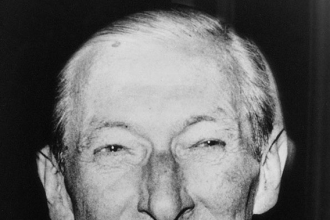Written by STEFANO SALERNO
“Our colors will be red, because we will be devils… and black, like the terror we will instill in our opponents.”
With this phrase, Herbert Kilpin, leading a group of English gentlemen, regular patrons of the American Bar, and a group of Italians, patrons of the Birreria Spaten, gathered at the Fiaschetteria Toscana on Via Berchet (the first headquarters of the club, according to other sources at the Hotel du Nord) in Milan, giving birth to the Milan Football and Cricket Club on Saturday, December 16, 1899. The club’s colors were red and black stripes on the jersey (at that time, however, shirts with buttons were used) and white shorts.
Kilpin initially served as a captain (but out of respect, he handed the armband to Allison, who was older) and remained in the role of player-coach. The first official match of Milan took place on March 11, 1900, against Mediolanum on Trotter’s field, facing off in a prehistoric Milanese derby and winning 2-0. It was on that football field (the “Trotter” was a field located in the open countryside where the central station was built in the 1920s) where Milan defeated the great Genoa in 1901, snatching from them the championship they had won for three consecutive years.

We then arrive at 1908, when the club experienced a true trauma with the departure of 43 members who disagreed with the management and left to find Inter. During this period, Milan had a great president named Piero Pirelli, an entrepreneur at the helm of the renowned tire industry, who did not achieve great satisfaction from the team but was instrumental in the planning of the San Siro Stadium, inaugurated in 1926 with a match between Milan and Inter.
The two World Wars framed Giuseppe Meazza’s rossonero parenthesis, a great forward from Milan who managed to tie his name to both Milanese clubs, especially Inter, hence why the San Siro Stadium bears his name today. Unfortunately, for many years, precisely 44, Milan didn’t win again until the arrival of the famous three Swedes Gren, Liedholm, and Nordahl, forming the celebrated GRE-NO-LI. It was in 1951, with the lineup: Buffon, Silvestri, Bonomi, Annovazzi, Tognon, De Grandi, Burini, Gren, Nordahl, Liedholm, and Renosto, that the rossonero team finally became Italian champions again.
The arrival of Andrea Rizzoli as president in 1951 brought the famous Uruguayan talent Juan Alberto Schiaffino to Milan, a World Cup champion with his national team and a star of world football. In those years, a very strong Milan began to emerge with the addition of great players such as Madini Cesare, Dino Sani, Altafini, and a young Gianni Rivera. The 1960s established Milan in the world with two victories in the European Cup in ’63 and ’69, plus an Intercontinental Cup in ’69, with Rivera winning the Ballon d’Or and the famous “Paron” Nereo Rocco as coach.
The following decade was characterized by the victory in the Cup Winners’ Cup in 1973 and the tenth league title, the one with the star, in 1979 (with Liedholm as coach), but above all by the retirement from playing of its immense number 10, Gianni Rivera. From that moment on, a difficult period began for the club, culminating in two relegations to Serie B and serious financial problems.
But in 1986, the advent of Silvio Berlusconi, a visionary entrepreneur, gave birth again to an extraordinary Milan capable of dominating in Italy and the world, forged by an extraordinary defensive line composed of players from its own youth sector: Paolo Maldini, Filippo Galli, Alessandro Costacurta, and above all the great Franco Baresi, along with a fabulous trio of Dutch players: Gullit, Rijkaard, and Marco Van Basten, a solid midfield with creativity composed of Carlo Ancelotti, Roberto Donadoni, Alberigo Evani, and a coach whose football theories changed Italian mentality, Arrigo Sacchi. Milan thus became Italian champions again, rivaling Napoli of Maradona, and above all, won the Champions League twice more and the Intercontinental Cup.
The 1990s saw more successes in Italy, Europe, and the world, with the team coached by Fabio Capello and with other fantastic players wearing the rossonero shirt: George Weah, Papin, Desailly, Savicevic, Boban. Remember the Athens final in 1994 against Cruyff’s Barcelona, beaten 4-0, with a phenomenal goal by Savicevic, and an unbeaten record in the Italian championship.

The 2000s were still filled with successes, especially in Europe, with Carlo Ancelotti taking over as coach and other great stars joining such as Andriy Shevchenko, formidable attacker, Andrea Pirlo, excellent playmaker, Nesta and Stam in defense alongside Paolo Maldini, Manuel Rui Costa, Rivaldo, Filippo Inzaghi, and a young superstar whose wonderful plays brought Milan back to the top of the world… Ricardo Kaka’, who also won the Ballon d’Or. In recent years, even Ronaldinho and Zlatan Ibrahimovic wore the rossonero shirt, and it was Zlatan who was responsible for the last Serie A title in Italy.

Great players have always been in the DNA of this great club, which has made its style of play an indelible mark in the world of football, so much so that it is considered, alongside Real Madrid, the greatest club in Europe. In over 120 years of history, the club has won: 19 league titles, 5 Coppa Italia, 7 Supercoppa Italiana, 7 Champions Leagues, 5 UEFA Super Cups, 2 Cup Winners’ Cups, 3 Intercontinental Cups, and it’s a club that I have loved passionately all my life.

Telegram Channel: https://t.me/theheritageoffootball
Instagram: @the.heritage.of.football





